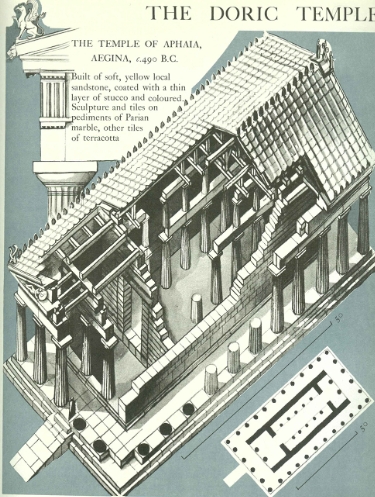The Temple of Aphaia is located on the island of Aegina in the Aegean Sea of Greece. It is a shining pearl of ancient Greek architectural art. The temple was built in the 5th century BC and is dedicated to the goddess Aphaia in ancient Greek mythology. The temple is not only famous for its architectural aesthetics, but also for its important position in ancient Greek religion and culture. Visiting this temple, tourists can deeply understand the exquisiteness of ancient Greek architectural design and feel the ancient Greeks’ devout belief in the gods.
The layout of the Temple of Aphaia adopts a typical Doric column structure, and the overall design is very symmetrical, showing the ancient Greeks’ high pursuit of architectural proportions and aesthetics. The colonnade of the temple presents a solemn and simple style, and each column has been carefully carved, reflecting the extraordinary skills of ancient architects. The carvings and decorations inside and outside the temple are also ingenious, especially the Greek statue that was once placed on the altar, which is one of the important artistic elements of this temple. The statues depict many scenes related to ancient Greek mythology, vividly showing the image of the goddess Aphaia and other gods, providing visitors with an opportunity to gain an in-depth understanding of ancient Greek religious culture.
The Temple of Aphaia is famous for its unique geographical location. Standing on the height of the temple, visitors can overlook the beautiful scenery of the Aegean Sea and enjoy the visual experience of the perfect integration of the temple and nature. For history lovers and architecture fans, this temple is a great place to explore ancient Greek civilization and architectural design.
Visiting the Temple of Aphaia is not only an architectural journey, but also a cultural and historical adventure. By appreciating works of art such as the greek statue in the temple, visitors can feel the creativity of ancient Greek artists and the profound influence of religious beliefs. The architectural plan and design of the Temple of Aphaia undoubtedly left a valuable legacy for ancient Greek architectural art, which is worth every visitor to explore and appreciate.




